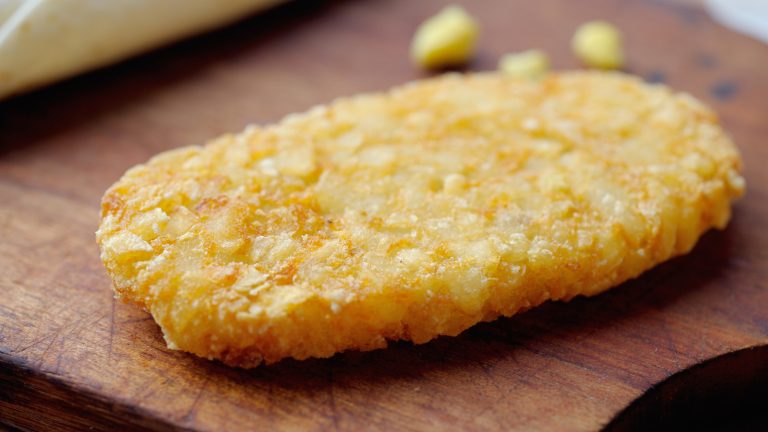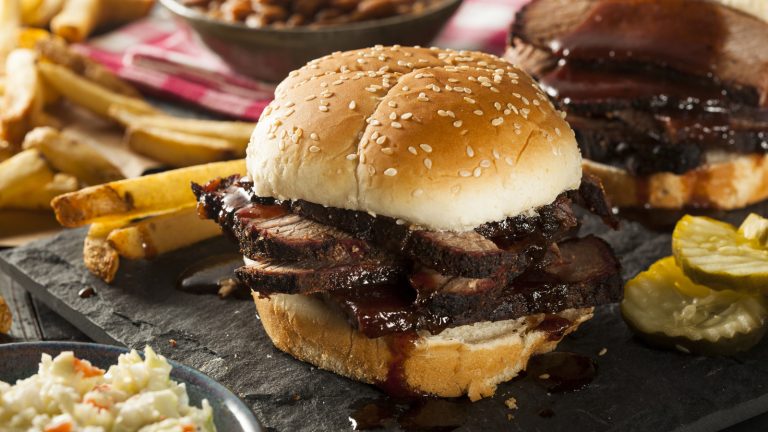We may receive a commission on purchases made from links.
“The Great British Bake Off,” or “The Great British Baking Show” as it’s known in the United States, has become somewhat of an empire, spawning spinoffs like “Junior Bake Off” and “Celebrity Bake Off,” as well as international adaptations like “The Great Australian Bake Off,” “The Great American Baking Show,” and “The Great Canadian Baking Show.” Fans all over the world tune in to hear those wonderful regional accents and watch talented home bakers turn out beautiful, scrumptious baked goods week after week. Many of us even find ourselves inspired to bust out the oven mitts and try our own hand at some choux pastry. Croquembouche, anyone?
Let’s not get ahead of ourselves, though. There’s loads to learn when it comes to baking, and despite a shocking number of prodigious young contestants that have stolen our hearts over the years, mastering the basics can take a lifetime. The iconic British baking competition show has no shortage of controversies, cake heartbreaks (remember #Bingate?), and baking fails, but it’s also just a really great place to learn some serious baking tips.
You can check out original “Bake Off” judge Mary Berry’s cake baking butter tip and this whole list of judge Paul Hollywood’s top baking tips. Or, read on for a roundup of some of our favorite baking insights from “The Great British Bake Off” over the years.
1. Blind bake your pastry
If you haven’t heard of blind baking before, no, it does not refer to some crazy blindfolded technical challenge. Blind baking, usually done when making pie or tart crusts, is a term that refers to the process of pre-baking a crust before adding filling. Particularly, if you are using a no-bake filling, this will be essential. Even when it comes to baked fillings, you may need to give the crust an extra chance to crisp to avoid a soggy bottom, one of the cardinal sins of “Bake Off.”
When it comes time to pop the crust in the oven, there is one key tip to keep in mind: Generally, you won’t want to just fill a tin with pastry and put it right in the oven, as the baking process will likely cause the crust to change shape. In order to keep its perfect shape intact, you’ll first need to weigh it down. There are a few ways to do this, but they all start with lining the crust with parchment paper. Then, you can fill it with a pie weight so it doesn’t puff up in the oven and become misshapen.
You’ll often see contestants on the “Bake Off” using specialty baking beads, and they really are a kitchen item worth investing in. But in a pinch, simply use regular old dried beans or rice from your pantry, and they’ll work just fine. Don’t forget that parchment paper hack, though, or you’ll end up with hard grains of rice baked into your crust that you can’t extract.
2. Keep an eye on caramel while it’s cooking
Many a “Bake Off” caramel has been ruined by the overzealous stirring of an impatient baker running out of time or the distracted baker who accidentally lets it burn. Frustrated, the contestant throws the ruined caramel into the sink where it stays glued to the bottom of a wasted pot while they start over. In theory, it shouldn’t be that difficult to caramelize sugar flawlessly. But it consistently proves to be tricky business in the tent.
Caramel in its purest form is made from just one ingredient: sugar. A “wet caramel” will add a little water, and a caramel sauce will then incorporate some butter or cream to make a gooey version that won’t harden right away. The first step of making any caramel is to boil sugar and let it melt, then brown just to the point before it’s burnt. Once it’s gotten there, you must quickly add any other ingredients or take it off the heat and place in an ice bath, or use immediately before it hardens like a rock.
Getting caramel to that perfect point makes bakers anxious; it takes longer than you’d expect, and then all of a sudden it’s burnt. Add the time pressure, and many people start reaching for a spoon or whisk to get things moving. However, this can be a mistake, as the sugar in caramel can start to re-crystalize when disturbed too much during the melting process, yielding a grainy texture. You’re better off gently swirling the heavy bottomed pot while it cooks.
3. Use supports to stack a tiered cake
Every season there’s at least one signature bake or showstopper challenge that calls for a tiered cake. Many overeager bakers have tried to make behemoth cakes with many layers that look impressive, only to have them collapse. Occasionally, even when a cake looks good, the judges cut into it and find the interior has been impacted.
This is a rookie mistake when it comes to layered cakes. They end up slipping and sliding around, weight distribution fails, and the layers are too heavy to stay stacked without collapsing. First things first: Layers have to be sliced or shaved down so that the top is flat. Straight out of the oven, a cake will probably have a slightly domed top, and that will not be a sturdy base to stack on. Next, cake dowels come into play. Dowels are plastic or wooden rods that are pushed into a lower layer before the next layer is placed on top. Often there will also be a thin cardboard placed between layers. Both of these elements add stability. You can skip the hardware store and buy specialty cake dowels and boards that even come with instructions.
The weight of the cakes above will crush the cakes below, causing them to “concertina.” That’s a word you may not have heard in this context before, but Paul Hollywood throws it around a lot. It refers to an accordion collapsing in on itself. Essentially, the cake smushes in on itself, creating a dense and rubbery texture that’s no fun to eat even if it looks pretty on the outside.
4. Don’t try to frost a hot cake
It’s just that simple! A hot cake will melt the frosting, and many other types of decoration, for that matter. There’s no doubt that every contestant who makes their way to the tent is a great baker. What separates the wheat from the chaff in early rounds often comes down to timing. Can you get your bake finished and ready to present in just the two or three (or four, if you’re lucky) hours allotted? Most of us aren’t used to baking under duress with a ticking clock. And one thing we certainly might forget to budget for is the time it takes for a cake to cool down before it’s ready to decorate.
When it comes to frosting, contestants simply must let their cakes and cookies cool fully before whipping out that piping bag or painting frosting flowers onto the side. Same goes for us laymen, but luckily we should have much more time to handle the situation baking at home. Dessert may be the last thing you eat, but it should probably be the first thing you make for a party. Let your cake cool all the way down before decorating, which can take two to three hours (and you can even let it cool overnight before frosting). Otherwise, the heat of the bake will melt the sugar, oil, or butter in the frosting and absorb it.
5. Listen to your cake
You may understandably assume that this is a metaphor … but no. Several contestants on the “Bake Off” have been shown literally listening to their cakes. Season 3 darling, and eventual winner, John Whaite famously demonstrated his method for checking if a cake was ready to come out of the oven by lifting it to his ear and listening. Other contestants, like Val in Season 7, have gone on to do the same. Some of them even credit Whaite with the method. If the bakers can learn from each other, then we can certainly learn from them too.
But what are they listening for, exactly? Well, as the cake bakes it goes from more liquid to solid form. Partly, they’re listening to the sound of moisture bubbling inside. If you can hear bubbling or popping noises, the cake isn’t done. Some bakers swear this method is even more effective than sticking in a toothpick to test, as the cake may not cook totally evenly. Give it a listen, and wait for the silence to tell you it’s done. Sounds kooky, right? But it just might work. We did mention Whaite won his season, so clearly there’s a method to his madness.
6. You can’t skip the proofing step
Another major time-crunch issue bakers face has to do with how long they let a bake proof before putting it into the oven. Proofing is a fermentation process of yeast eating carbohydrates and releasing gas in the dough. That’s what makes it rise. Don’t let it proof long enough, and your loaf will be small and dense. Let it proof too long and the structure may collapse. Under-proofed or over-proofed, the results can be disastrous.
We see this issue arise the most in bread week, when Paul Hollywood rules the roost with an iron fist and regularly sticks his finger into people’s dough to prove a point. Both the texture and appearance of a loaf can be seriously affected when the proofing step is messed up. For instance, a tear across the top of the loaf is an indication that the dough was under-proofed.
Proofing is also affected by temperature. There is a science to it, and you’ll need to experiment a bit to figure out exactly where and how long to proof a bake in the environment of your particular kitchen. There’s no one right answer. Some recipes call for an overnight proof in the fridge, others just an hour in a warm dark corner. Some ovens have a proof setting or a special warming drawer to help get a more standard heat, and some people leave their dough in a good old fashioned proofing basket on a counter or in a cupboard. You can even try this air fryer shortcut to proof your dough, but it may take a little experimenting to get optimal results.
7. Don’t overwork your dough
There’s such a thing as too much mixing and kneading. Every bread week, someone will inevitably hear the classic dreaded criticism from the king of bread, Paul Hollywood: “The dough’s been overworked.” Many a loaf has been ruined this way, much to the eager baker’s dismay.
To be sure, kneading is a crucial part of the bread making process, and some doughs require quite a bit of work. We’ve seen contestants furiously beating their dough, or slapping it across the table. Others prefer to let their stand mixer do the hard work. Either way, this kneading helps to develop gluten, distribute yeast, and build the texture (also known as the crumb) of the eventual loaf. But how much kneading is enough? Generally, when it comes to bread, the windowpane test is the best way to tell. If you can stretch your dough, without it breaking, to the point that you can almost see through it, it’s ready. Knead no more, or risk a hard crust and a dry loaf.
Overworking it also comes up in the world of delicate batters and meringues. Beating egg whites into a light and fluffy, but just stiff, texture is a skill. Don’t go far enough, and it won’t hold. Go too far and it starts to break back down. When a recipe tells you to “stir until just combined,” or “gently fold” a batter or dough, they mean it. Otherwise the results will be dense and deflated.
8. Maybe don’t work with chocolate on a hot day
Somehow it always seems to be the hottest day of the year during chocolate week. Working with chocolate involves melting, sure, but trying to get chocolate to behave in high temperatures is a bit of a doomed mission. In order to harden with the right shine, chocolate needs to be properly tempered, and that can be tricky when the ambient temperature is scorching. And forget building a dessert with decorative chocolate elements; chocolate collars, mirror glazes, and other particular little truffles can start to melt and morph in the heat. Bakers struggle to get their chocolate out of their molds and onto their bakes without some issue and maybe a breakdown or two.
The same can be said for sugar work (spun sugar, sugar nests) and ice cream. Every season there’s at least one challenge that requires the bakers to whip up a homemade ice cream — while trying to do a million other things — and someone will run out of time for that ice cream to fully set. Add high summer temperatures to the equation, and more than a few of them will start to panic over their melted ice cream or wilted cotton candy.
9. Dare to try surprising flavor combinations
Some of the best bakes have been ones that surprised the judges. Unusual flavor combinations can make for some delicious and highly memorable dishes. So, don’t be afraid to make strong choices when it comes to herbs, spices, and mixing sweet and savory.
Nadiya Hussain, winner of the 2015 season, went on to publish cookbooks and host cooking shows of her own. Her bubblegum and peppermint flavored eclairs won the judges over with their bold colors and unorthodox flavors. Recent fan-favorite contestant from Season 15, Dylan Bachelet, also captured the hearts of fans worldwide, and high praise from the judges, with his inventive signature bakes (and adorable, stylish look).
Powerful flavors like cardamom, rose, lavender, matcha, and chili have all had their shining moments when applied in the right ratios to the right bakes. But there is such a thing as too much flavor, too. Many contestants have famously sought to win over the likes of judges Mary Barry and Prue Leith with boozy bakes, only to find there is such a thing as too much of a good thing. Dumping a whole bottle of alcohol into your bake is probably not a great idea, and neither is adding so much chili that nobody can even swallow one whole bite.





